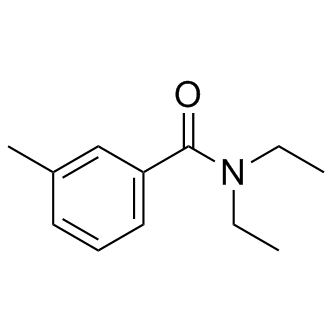The global DEET (diethylmeta-toluamide) market presents a detailed report |over 100 pages|, which is expected to witness significant growth in the coming years. The introduction of new technologies and innovative solutions will help increase market revenues and increase its market share by 2031. Revenue by Type (96%, 97%, 98%, 99%, Others) and Market Forecast by Application Size (Mosquito Repellent) Aerosol Spray, Mosquito Repellent Non-Aerosol Spray, Mosquito Repellent Cream, Mosquito Repellent Lotion, Mosquito Repellent Stick, Mosquito Repellent Foam and etc.).
This report provides a comprehensive analysis of the DEET (diethyl-m-toluamide) market, including its current status, key industry players, emerging trends, and future growth prospects. It provides an in-depth study of the global market situation, offering valuable information on current trends and factors influencing the DEET (diethyl-m-toluamide) market at the global level. The report also includes market revenue growth statistics at various regional and national levels, along with an assessment of the competitive landscape and detailed organizational analysis over the forecast period. Additionally, the DEET (Diethyl Toluamide) market report examines potential development drivers and studies the current distribution and adoption of market share by type, technology, application and region until 2031.
The global DEET (diethyl toluamide) market is expected to grow at a significant rate during the forecast period from 2023 to 2031. The market is expected to grow at a steady pace in 2022 as key players increasingly adopt strategies and the market is expected to grow beyond the forecast range.
The global DEET (diethyl-m-toluamide) market is segmented by application, end user, and region, with special focus on manufacturers located in different geographical regions. The study provides a comprehensive analysis of various factors contributing to the growth of the industry. It also describes the potential future impact of various market segments and applications on the industry. The report includes detailed price analysis by type, manufacturer, region, and price trends.
The Deet (diethyl-m-toluamide) stock report provides an overview of the market value structure, value drivers and key factors. It assesses the industry situation and subsequently studies the global picture including industry size, demand, applications, revenue, products, regions and segments. Additionally, the DET (Diethyl Toluamide) market report provides market competition among distributors and manufacturers, including market value estimation and cost chain structure segmentation.
DEET (chemical name N,N-diethylm-toluamide) is an insect and tick repellent used in homes/living areas, on people and clothing, on cats, dogs and horses, and in pet living/sleeping areas. DEET is used to repel biting flies, midges, black flies, chiggers, deer flies, fleas, mosquitoes, horse flies, midges, black flies, mosquitoes, gnats, horse flies and ticks. DEET products can be applied directly to skin and/or clothing and are available in a variety of formulation types (e.g. aerosol sprays, non-aerosol sprays, creams, lotions, sticks, foams and wipes) and concentrations (product range: from 4% a.i. up to 100% a.i.).
The DET (diethyl toluamide) market revenue was US$1 million in 2016, grew to US$1 million in 2021, and will reach US$1 million in 2026, with a compound annual growth rate of US$1 million from 2021 to 2026.
Considering the impact of COVID-19 on the global DEET (diethyl toluamide) market, this report analyzes its impact from a global and regional perspective. The report focuses on COVID-19 market analysis and related response policies across various regions, from production to consumption in North America, Europe, China, Japan and other regions.
The report also provides detailed analysis of various businesses’ strategies to combat the impact of COVID-19 and find a path to recovery.
How the DEET (diethyl toluamide) industry will develop in the context of the COVID-19 epidemic is also analyzed in detail in Chapter 1.8 of this report.
The report provides the DET (diethyl m-toluamide) market forecast by region, type and application, along with sales and revenue forecast from 2021 to 2031. It highlights the DET (diethyl-m-toluamide) market share, distribution channels, key suppliers, changing price trends and raw material supply chain. The DET (Diethyl-m-Toluamide) Market Size report provides critical insights into the current industry assessment and offers market segmentation, highlighting the growth prospects of the industry.
This report focuses on DEET (diethyl-m-toluamide) market manufacturers, analyzing their sales, value, market share and future development plans. It defines, describes and forecasts the growth of the DEET (diethyl-m-toluamide) market based on type, application and region. The goal is to study the potential, strengths, opportunities, challenges, as well as constraints and risks of global and key regional markets. The report identifies important trends and factors driving or hindering the growth of the DEET (diethyl-m-toluamide) market, benefiting stakeholders by identifying high-growth segments. Additionally, the report strategically evaluates each submarket’s individual growth trends and their contribution to the overall DEET (diethyl-m-toluamide) market.

Post time: Sep-19-2023



